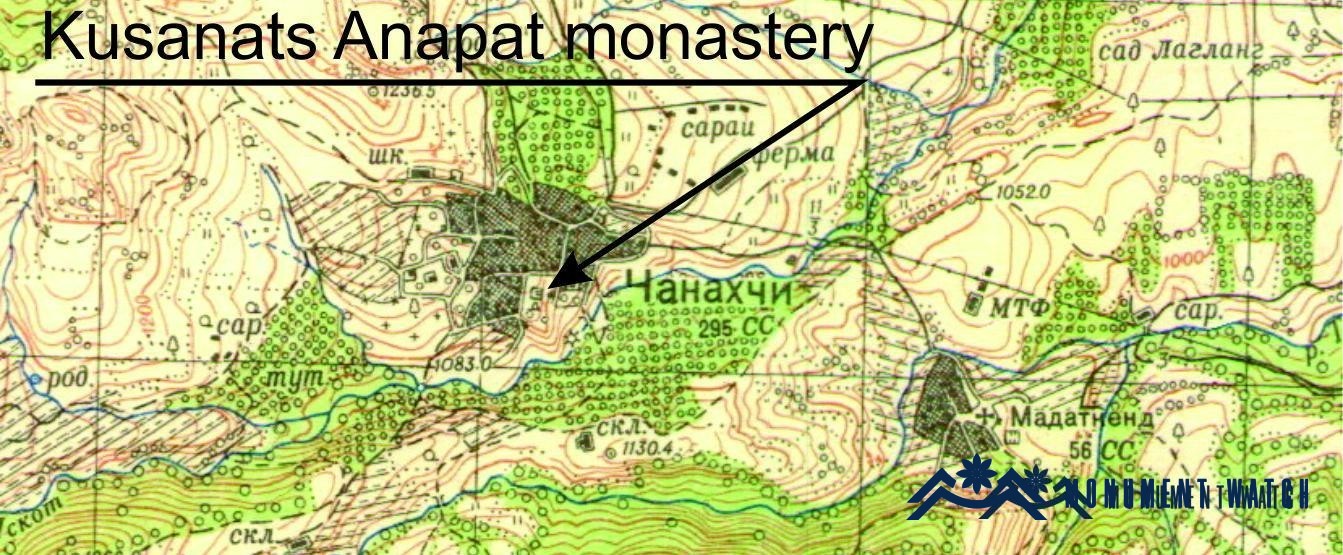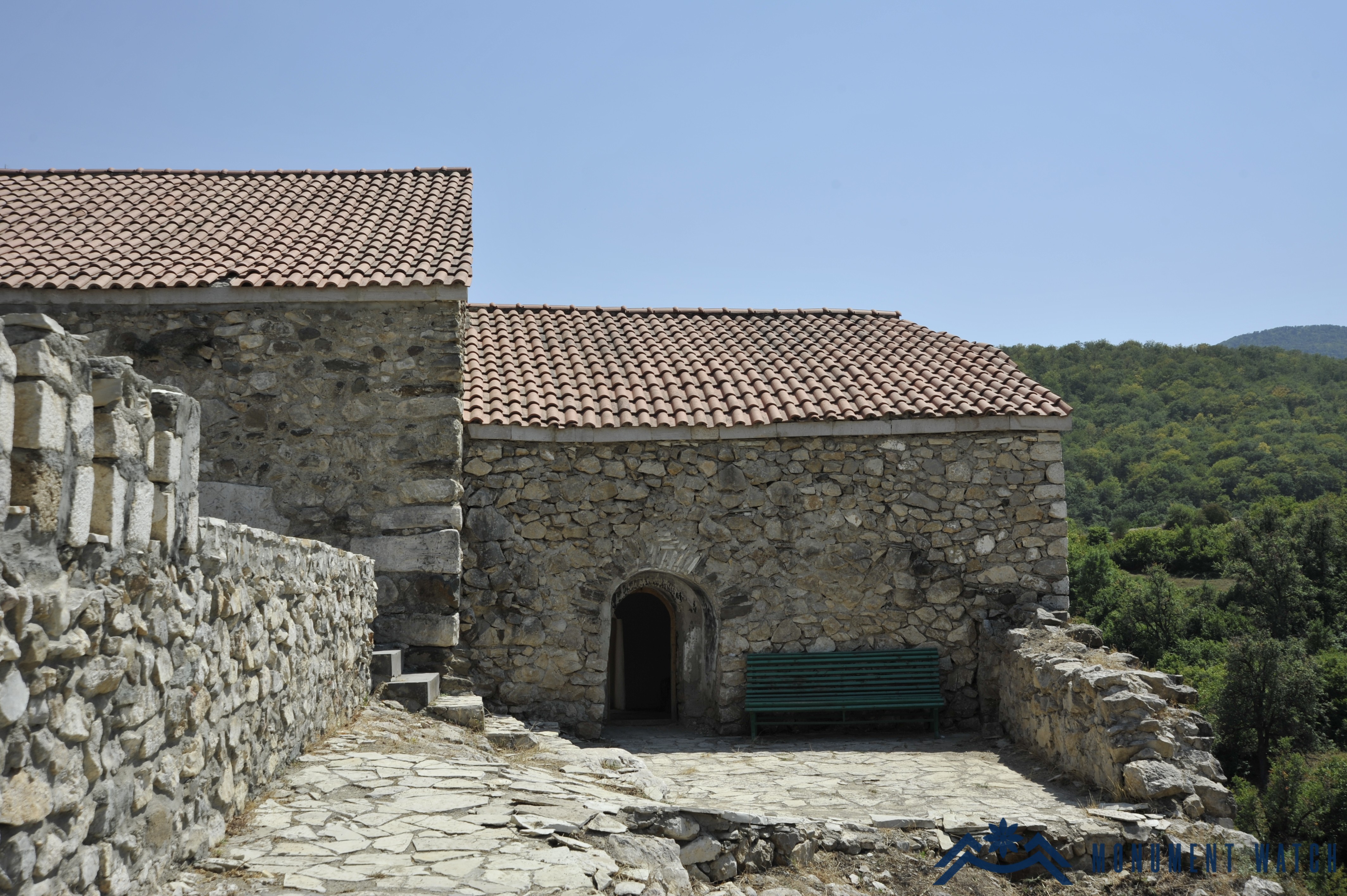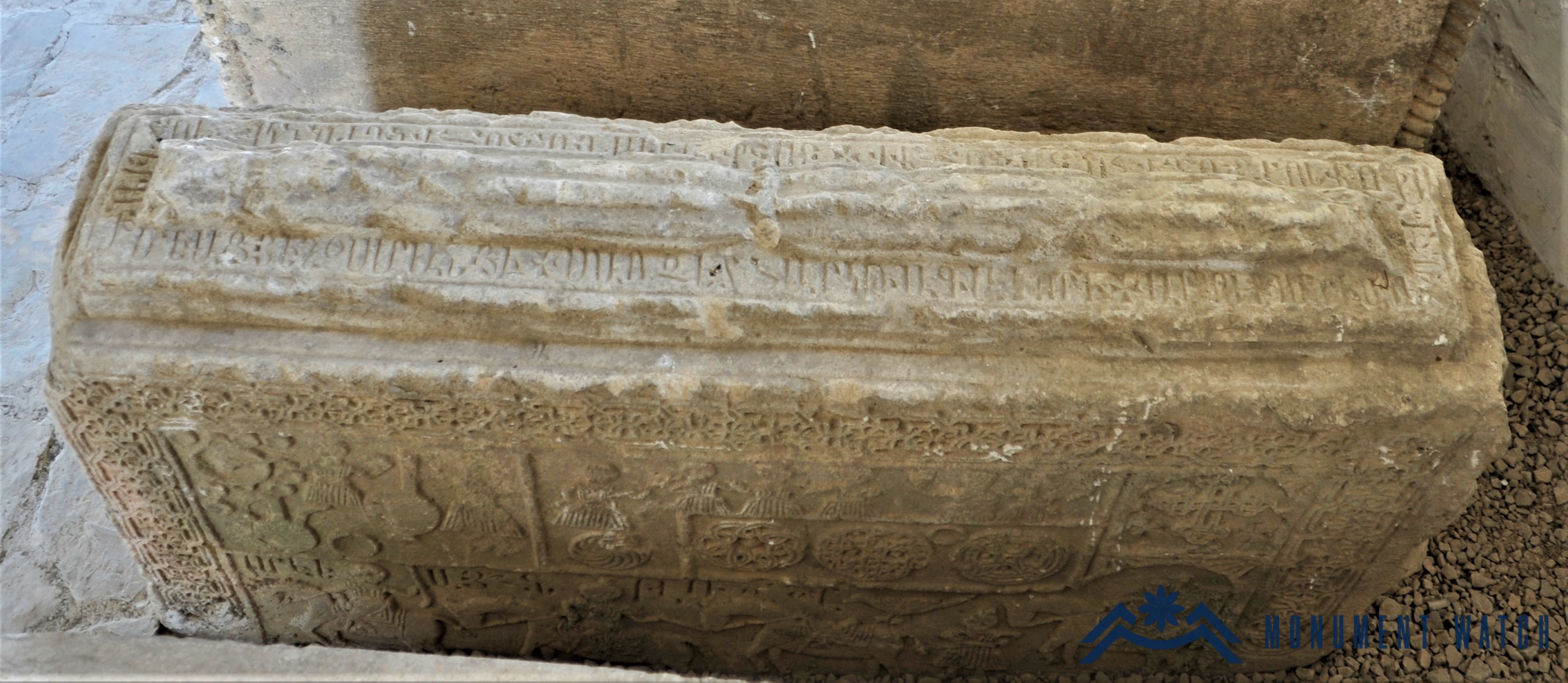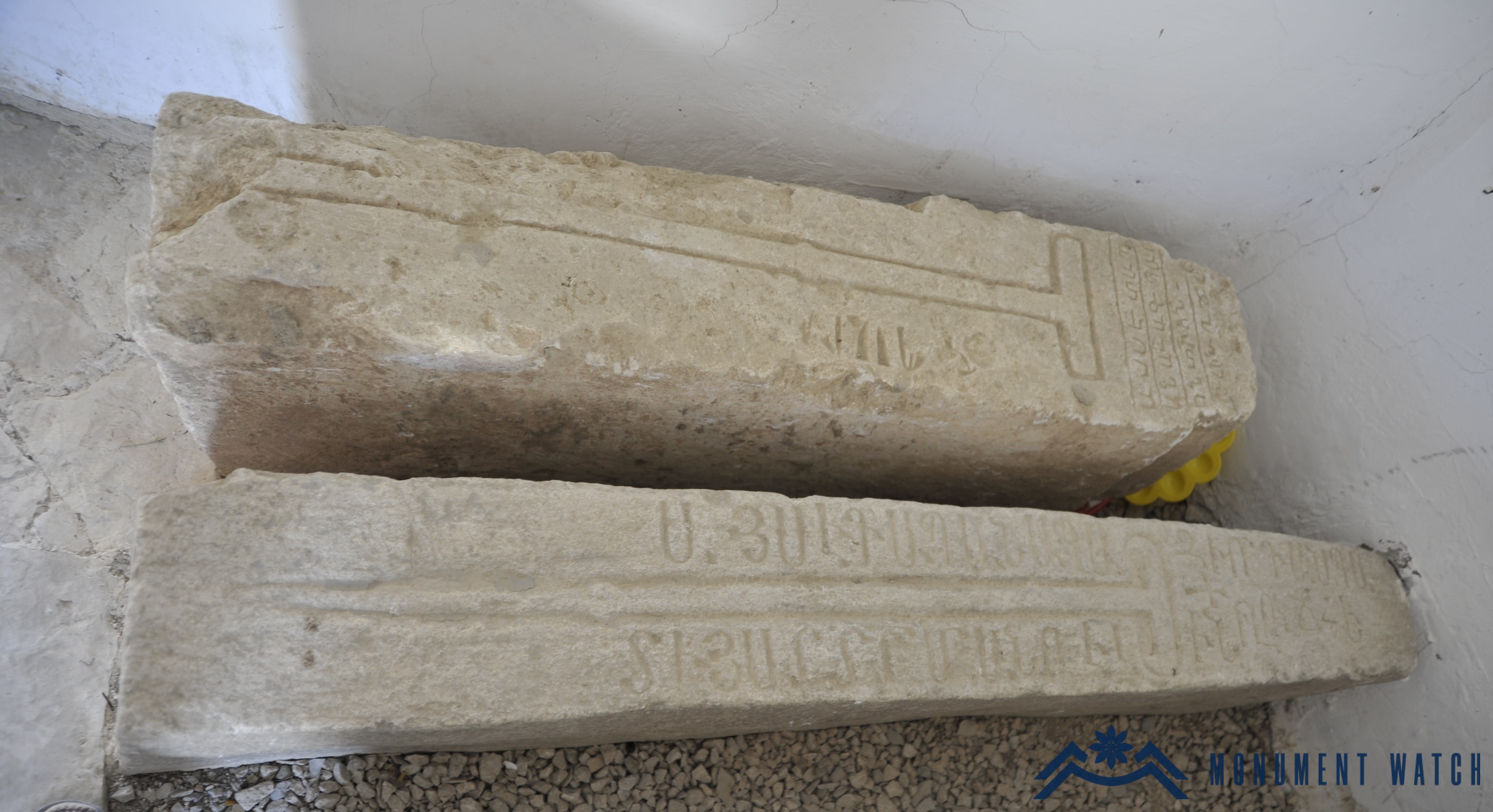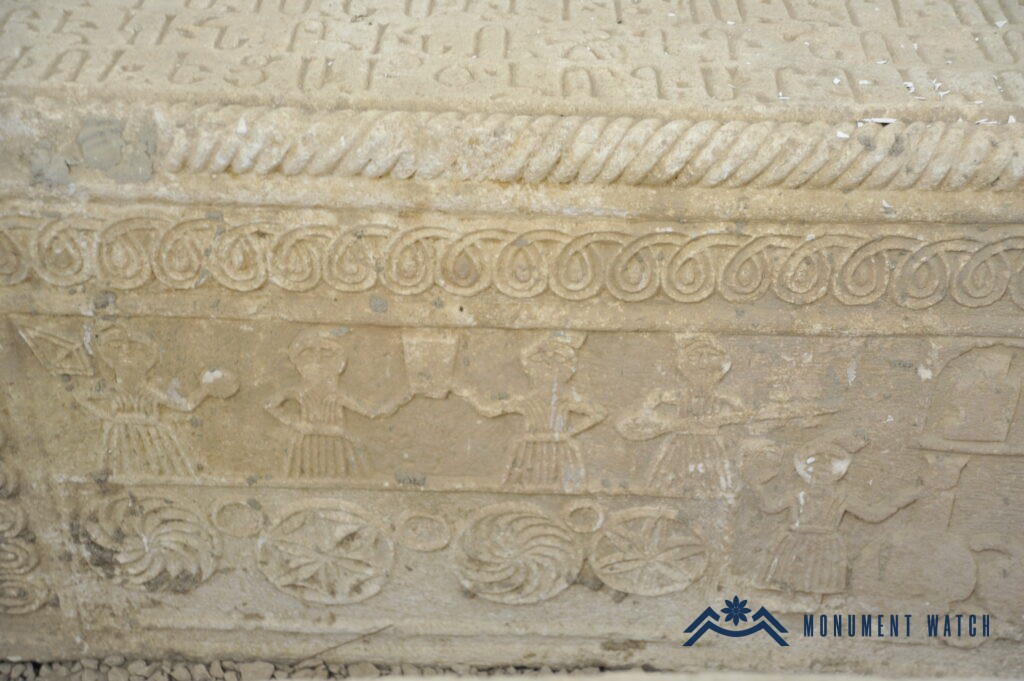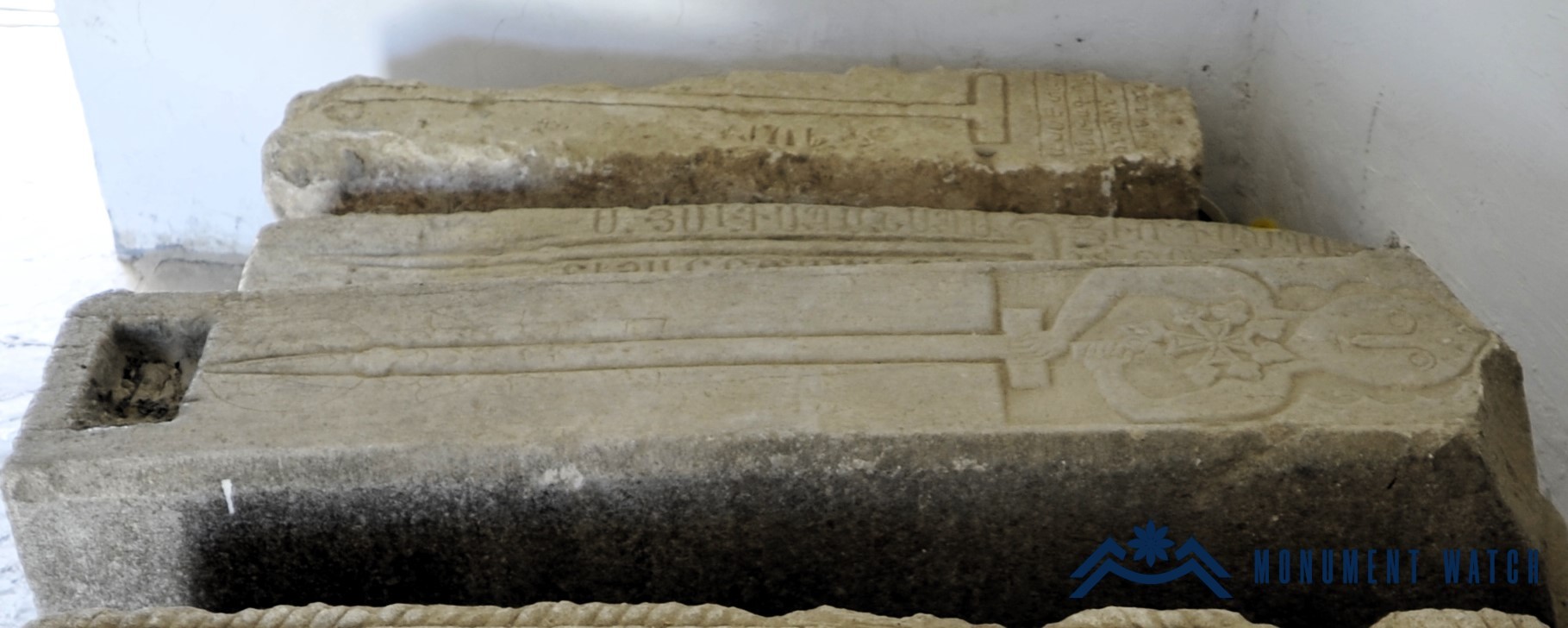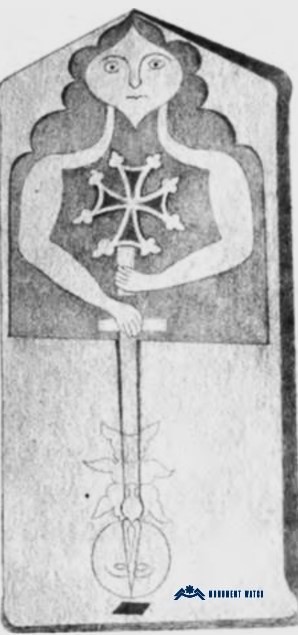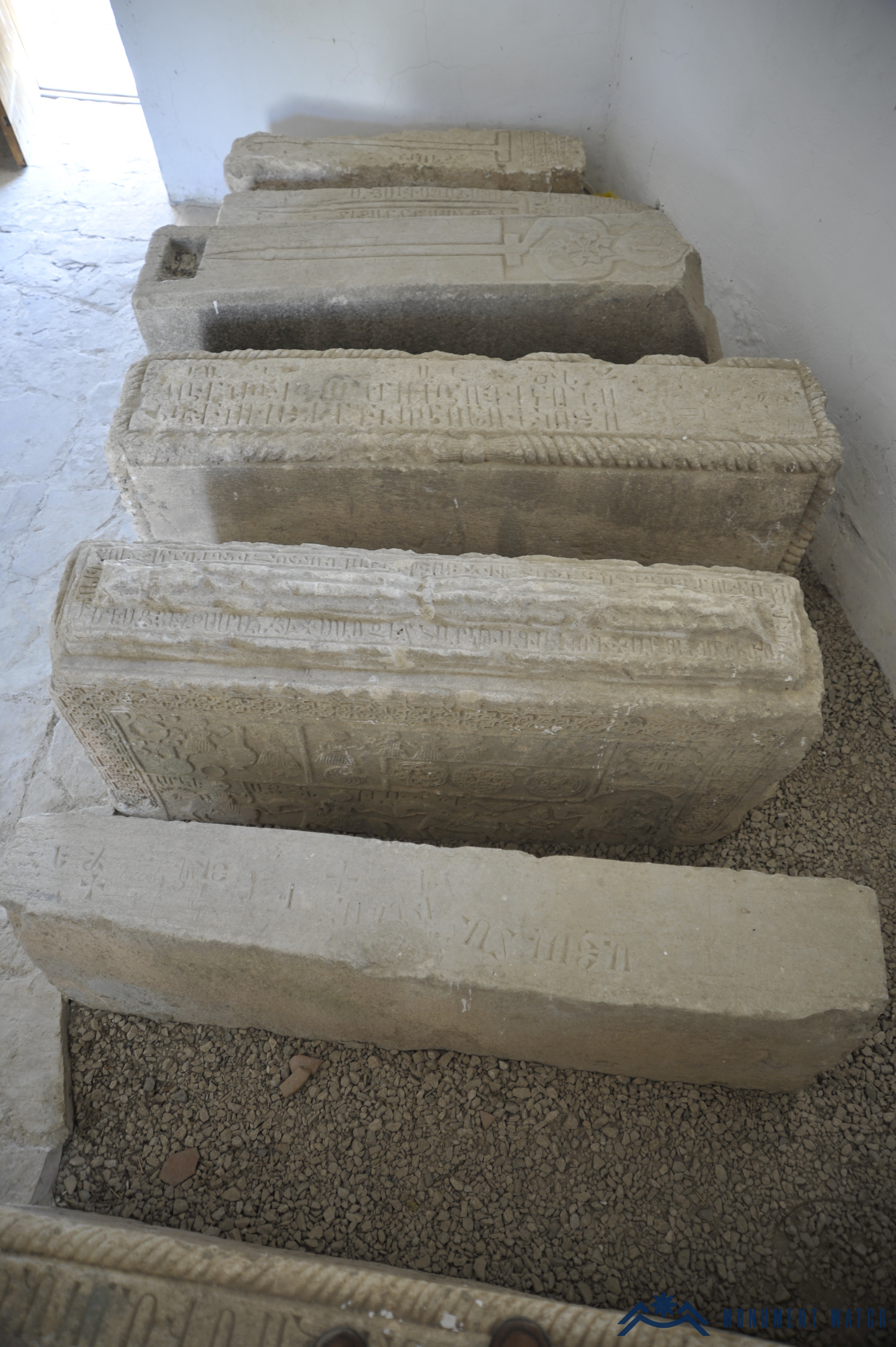The family mausoleum of the Melik Shahnazaryans
Location
The gavit of Kusanats Anapat, situated in the southeastern part of the village of Avetaranots (formerly Chanakhchi) in the Askeran region of the Republic of Artsakh, functioned as the family mausoleum of the Shahnazaryan family (Fig. 1, For more information about the Kusanats Desert, see:https://monumentwatch.org/en/monument/the-hermitage-kusanats-of-avetaranots/).
It has been under Azerbaijani occupation since 2020.
Historical overview
Some information about the mausoleum is provided by M. Barkhudaryants and E. Lalayan (Barkhudaryants 1895, 96; Lalayan 1897, 43-45). In particular, M. Barkhudaryants notes:
“The mausoleum also includes a gavit, constructed in the same style. Its dimensions are 5.75 meters in length and 8.90 meters in width (from south to north). Just as the mausoleum served as a special nunnery, the gavit functioned as an exclusive mausoleum for the princely Melik Shahnazaryan clan. The gavit houses the remains of Archbishop Manuel, Melik-Mirza, Melik-Yuseyin, Melik-Yosef, and their wives” (Barkhutareants 1895, 96).
Describing the Kusanats Anapat of Avetaranots, E. Lalayan writes: “On the western side of the Anapat, there is an arched, open gavit measuring 6 meters in length and 9 meters in width, with a small window on each wall. This served as the mausoleum of the princely Melik Shahnazaryan family. Within it lie the graves of Manuel Vardapet, Melik Mirza, Melik Hussein, Melik Hovsep, their wives, and the family matriarch” (Lalayan 1897, 43, figs. 2, 3, 4).
In the Collection of Materials for the Description of the Territories and Tribes of the Caucasus, an article dedicated to the Avetaranots Monastery mentions:
"The monastery has a courtyard on its southwestern side where some pious nuns and meliks are buried" (Collection of the Materials for Description of Places and Tribes of the Caucasus 1894, 79).
The author of the article, E. Melik-Shahnazaryan, further notes that "the daughter of King Vachagan, the founder of the monastery, was buried here. She is also recognized as the first nun of 'Kusanats Anapat'" (Collection of the Materials for Description of Places and Tribes of the Caucasus 1894, 81; figս. 5, 6).
Barkhudaryan also provides information about Kusanats Anapat, stating:
“…It has a small gavit on the western side, which served as a mausoleum for the meliks and their families, as well as the matriarchs. In earlier times, more people were buried here. The editors mention Manvel Vardapet, Melik Mirza, Melik Hussein, Melik Hovsep, and the matriarchs. Unfortunately, none of their epitaphs have been transcribed” (CAE, 148; figs. 7, 8).
Sh. Mkrtchyan also mentions the mausoleum of the Melik Shahnazaryans noting:
“The gavit of the Kusanats Anapat church is a rectangular vaulted structure, measuring 6 meters in length and 9 meters in width. It served as the family mausoleum of the Melik Shahnazaryans. Here lie the mausoleums of Manvel Vardapet, Melik Mirza, Melik Hussein, Melik Hovsep, and their wives” (Mkrtchyan 1980, 124).
It should be noted that the gravestones in Kusanats Anapat have also been referenced by Azerbaijani sources, as discussed by H. Petrosyan. For instance, a certain Rzaev "...describes the gravestones from the 18th and early 19th centuries in Avetaranots and then declares them to be Albanian, later attributing them to Turko-Oghuz origins, while disregarding their actual dates and ignoring the extensive Armenian inscriptions they bear.
Here is what one of these mausoleum stone inscriptions reveals:
“This is the mausoleum of Melik Shahnazar.
Son of Melik Hussein, Date (1736).
These are my words of praise.
On Melik Hussein,
Which I write on this mausoleum .
He was the Lord of the land of Varanda,
And of its 35 villages,
With his table full of bread,
He has mercy on every nation․
His appearance was praiseworthy,
He greatly massacred the nation of Turks,
He fought with the Ottomans,
He gave no tax to the king,
He was a strong wall to the world
It was in 1709.
Would Rzaev’s Turk-Oghuz ancestor have forgiven him for considering Oghuz a figure who presents himself as the pride of the Armenian nation, who slaughtered Tajiks, and who fought against the Ottomans?" (Petrosyan 2010, 145).
Architectural-Compositional Examination
The gavit of the Kusanats Anapat church is a rectangular vaulted building with windows and a square floor plan (6.4 x 6.4 meters, Certificate of Monuments of the Ministry of Education, Science, Culture and Sport of the Republic of Artsakh).
The condition before, during, and after the war
The monument was in good condition before the war, but there is currently no available information about its present state.
Bibliography
- Barkhutareants 1895 - Barkhutareants M. Artsakh, Baku.
- Lalayan 1897 - Lalayan E., Varanda, "Ethnographic Journal", book, Tbilisi.
- CAE 5 - Corpus of Armenian Lithography, Issue 5, Artsakh, compiled by S. Barkhudaryan, Publishing House of the Academy of Sciences of Armenian Soviet Socialist Republic, Yerevan, 1982.
- Petrosyan 2010 - Petrosyan H. Cultural ethnocide in Artsakh (the mechanism of appropriation of cultural heritage) / Azerbaijan's state terrorism and the policy of ethnic cleansing against Nagorno-Karabakh, Shushi, pp. 137-148.
- Collection of the Materials for Description of Places and Tribes of the Caucasus 1894- Collection of the Materials for Description of Places and Tribes of the Caucasus, issue 19, pp. 78-83.
- Certificate of Monuments of the Ministry of Education, Science, Culture and Sport of the Republic of Artsakh- Certificate of Department of Monuments Protection and Study of Tourism Department.
The family mausoleum of the Melik Shahnazaryans
Artsakh
